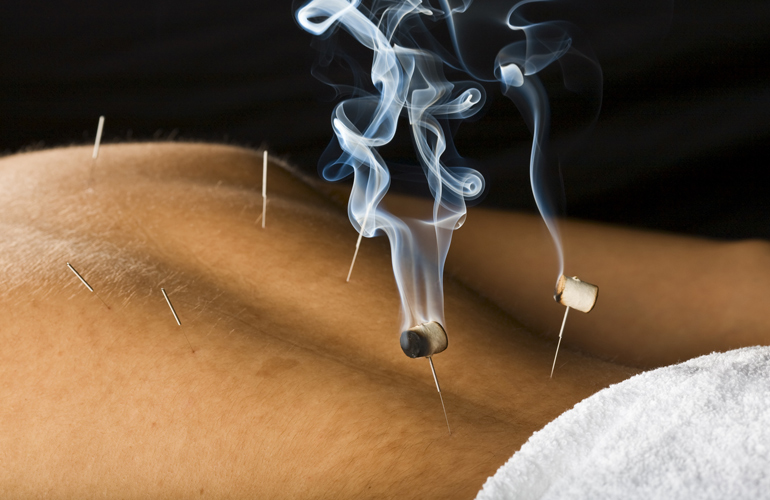What is Acupuncture?
Acupuncture is a safe, effective system of medicine that has been used for thousands of years to alleviate pain and address the root cause of disease. It is, in fact, the only form of medicine for over a third of the world’s population. The goal of treatment is to restore the body’s natural ability to heal itself so we can maintain our health and well-being.
Acupuncture is the practice of inserting thin needles into specific points on the body that belong to meridians. Each meridian correlates with an organ in the body. When an organ is out of balance or is diseased, the flow of energy (known as “qi” or “chi”) that normally traverses these meridians becomes blocked. This stagnation leads to ailments in both the body and the mind. Inserting needles at strategic points along these meridians help to unblock these stagnations, restore the normal flow of qi, and address most medical complaints.
Acupuncture can be used to prevent, treat, and cure a wide variety of conditions. It is an effective and natural way of restoring balance and promoting wellness throughout the body. For centuries, acupuncture has been used to successfully treat difficult or “incurable” diseases. Nowadays, it is used to prevent and treat many common as well as lesser-known conditions.
Is Acupuncture painful?
Acupuncture needles are as thin as 2-3 strands of hair. Most people do not find the insertion of such hair fine needles to be painful, however you may feel a bit of a pinch when the needles are tapped in. We use fine, solid, filiform needles, unlike hypodermic needles, which are thicker, hollow and have cutting edges. This is why acupuncture feels nothing like getting a shot or having blood drawn.
What conditions are treated with Acupuncture?
Acupuncture is used for a broad range of health issues including acute conditions and pain as well as chronic and degenerative diseases. The World Health Organization (WHO) and The National Institute of Health (NIH) established acupuncture’s safety and efficacy for treating a wide range of conditions including:
Pain
- Acute and Chronic Pain
- Back/Neck/Shoulder/Knee Pain
- Sciatic
- Musculoskeletal Pain
- Whiplash
- Arthritis
- Fibromyalgia
- Headaches/Migraines
- TMJ/Jaw Pain
- Neuropathy
Mental Health
- Stress
- Anxiety
- Depression
- Eating Disorders
Women’s Health
- Premenstrual Syndrome
- Irregular Periods
- Menopausal Symptoms
- Infertility
- Morning Sickness
- Low Libido
Men’s Health
- Erectile Dysfunction
- Low Libido
- Prostate Pain
- Groin Pain
Respiratory
- Asthma
- Allergies
- Snoring
- Bronchitis
- Sinusitis
- Common cold
- Immune Boosting
Gastrointestinal
- Acid reflux
- Diarrhea/Constipation
- Irritable Bowel Syndrome
- Colitis
- Bloating/Nausea/Vomiting
Renal
- Urinary Tract Infection/Cystitis
- Yeast Infection
- Water Retention
- Overactive Bladder
- Urination Problems
Cardiovascular Conditions
- Essential hypertension
- Palpitations
Other Conditions
- Withdrawal from street and pharmacological drugs
- Appetite Suppression
- Metabolic Health
What can I expect when I go to an Acupuncturist?
On the first visit, the Acupuncturist will ask you a series of questions and do a full health history, all to understand the root cause of the concerns you are hoping to get relief from. The Acupuncturist will ask about your symptoms, health and lifestyle. Afterward the Acupuncturist will examine your tongue, feel your pulses on your wrists and palpate various parts of your body. This helps the Acupuncturist find patterns that indicate which organs and meridians are out of balance. With this information, the Acupuncturist will make an appropriate treatment plan. After your initial interview and examination, you will receive an Acupuncture needle treatment.
What is a typical Acupuncture treatment like?
In accordance with your personalized treatment plan, you will receive an acupuncture needle treatment. Upon the needling, you may feel a slight sensation resembling a temporary pinch when the needle is inserted. Once the needles are placed there may be a slight tingling, numbness or heaviness in the area while the practitioner is stimulating the point. These are positive signs that the needles are affecting the acupuncture point. Usually you will be lying on a comfortable padded table or seated in a chair. Often, people become very relaxed and fall into a light sleep during the session. Some treatments may include cupping or the use of moxa, as well.
How long do treatments take?
The initial visit and first treatment will last 45-60 minutes. A follow up office visit will last from 30-45 minutes. Depending on the goal of the treatment, needles, once inserted, can be left in place for up to 25 minutes.
How many treatments are needed and how often?
Change will happen with one treatment, but fully healing the root condition will often take longer. The frequency of treatment and number of treatments needed is related to the patient’s condition. Generally, the longer the patient has had the condition the longer the course of treatment will be before showing substantial and lasting results. Acupuncture can be scheduled as often as five times a week or as little as once a quarter. As symptoms improve fewer visits are required. A client should discuss his or her treatment program with the Acupuncturist, as each individual case is unique.
Is Acupuncture safe?
Yes. The U.S. Food and Drug Administration (FDA) approved acupuncture needles for use by licensed practitioners in 1996. The FDA requires that sterile, nontoxic needles be used and that they be labeled for single use by qualified practitioners only.

